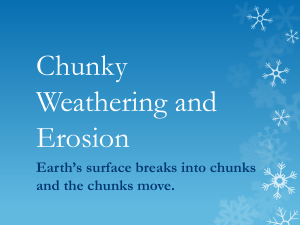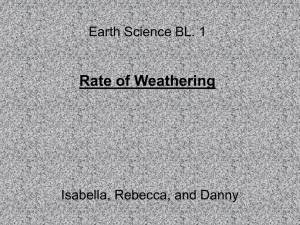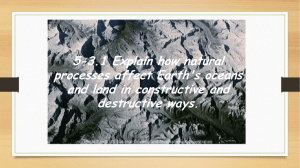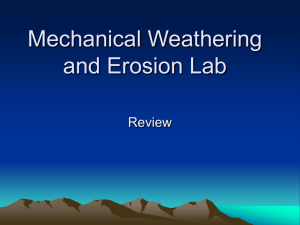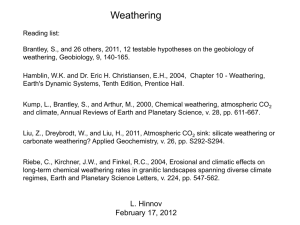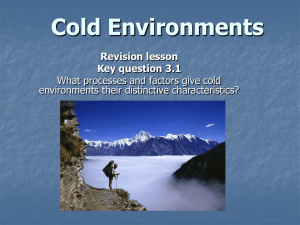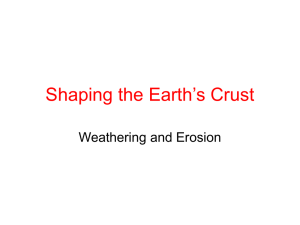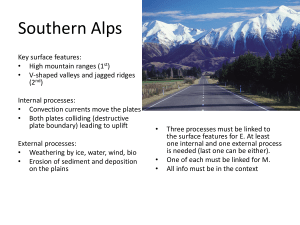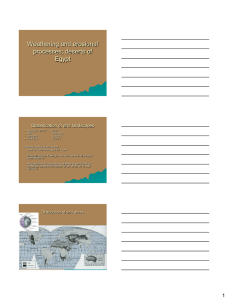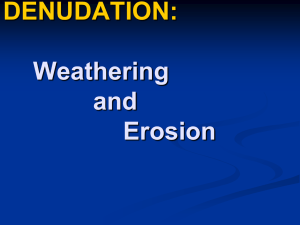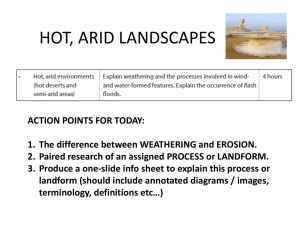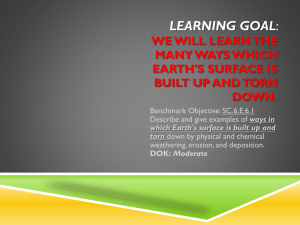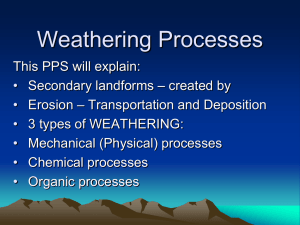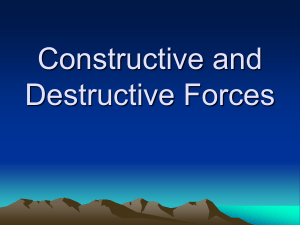Desert Erosion
advertisement
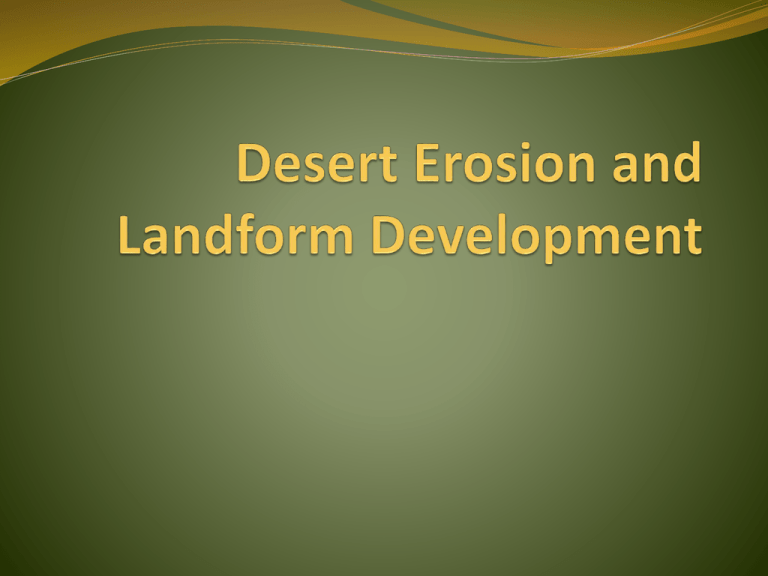
How do you think this formed? What are the main agents of erosion in deserts? Wind Water Contrary to what we might believe, water is actually thought to be the most significant agent of erosion at work in desert environments Weathering What is the difference between chemical and physical weathering? Write a definition for each. Which is most important in a desert? (see p 290 PG) Why is weathering in deserts so slow? Insolation Weathering Insolation weathering Also known as exfoliation or onion skin weathering. Why? Large diurnal temp range (alternate heating & cooling) Occurs when there is a sudden temperature change (eg cool rainfall) In deserts rock temperatures of up to 80 degrees have been recorded. Rocks may be 20 degrees hotter than the surrounding air. Salt Crystallisation Most efficient underground, where there is more moisture Salt crystallisation is where rocks are broken down by salt crystals growing in the cracks Salts in the soil and rock are dissolved and penetrate porous rocks eg sandstone As they recrystallise they exert pressure and force the rocks to break apart Sand Blasting Entrained particles (those picked up by the wind) are carried by the wind, and act like sandpaper on the bottom of rocks where most sand particles are carried. (abrasion) Helps to form mushroom rocks (but chemical weathering is important too) Solution weathering A form of chemical weathering, where rainwater dissolves soluble particles in the rock. Relic Features Many desert features are actually relic features from times when there was much more water present in the environment. What is badland topography? See p 292 PG What is the impact of the slow rate of weathering in arid environments on the development of landforms? What is the difference between weathering and erosion? How does the rate of weathering affect desert erosion? Desert Landforms Weathering and erosion combine to form some significant desert landforms. Water and wind both play an important role in their formation Water and landform development in arid environments Make notes from p292-294 on: The role of water Rainsplash Exotic rivers Internal drainage Playas Evaporites Wadis/arroyos/dry creeks Alluvial fan Piedmont Bajada Box canyon Anabranches Reticulate drainage Inselbergs (see p 192 landform systems) Why is water more effective than wind at shaping landforms in arid environments? Wind and landform development in arid environments. Make notes from p295-296 on Aeolian action Ergs Deflation & deflation hollows Saltation Sand sheets Barchans Parabolic dunes Longitudinal or seif dunes lunettes Pics from http://www.egyptoffroad.com/trips.html http://farm4.static.flickr.com/3017 /2707437345_befb90765c.jpg?v=0


